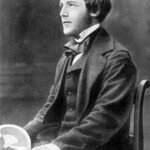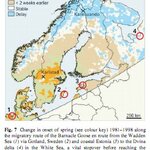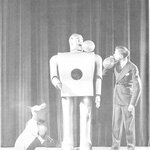Science History

I had a question posed to me last week; 'what was the first science experiment?'
The downside to knowing a lot, including copious amounts of trivia and a completely unnecessary pantheon of movie quotes, is an occasional inability to answer a simple question simply. I was somewhat stumped because much of what we think of as science was really engineering that required some knowledge of natural laws, for example Archimedes and his bathtub or Archimedes (again) with his death ray(1), so I wanted to factor those out, but I am sure my answer was not what most people expected because it is…
Not many plumbers become known worldwide for significant fossil discoveries but self-taught paleontologist and archaeologist Harley Garbani did just that, finding skulls of the youngest-known Tyrannosaurus rex and the youngest-known Triceratops in a distinguished citizen science career.
His finds are on display at the Natural History Museum of Los Angeles County, the University of California Museum of Paleontology and other places. Garbani was citizen science before it needed a name - a time when scientists were not primarily academics. Mostly he liked to hunt …

Anania Shirakatsi (Ananias of Shirak) was an Armenian scientist and mathematician, famous there for authoring two important works, Geography and Cosmography and the Calendar, which tackled astronomy, meteorology, and geography.
He is considered the father of natural sciences in Armenia and his books, while readable to a lay audience, were also technical enough to be used as textbooks for centuries.
He described the world as "being like an egg with a spherical yolk (the globe) surrounded by a layer of white (the atmosphere) and covered with a hard shell (the sky)" and wrote that "…

Only a moment ago, young James Clerk Maxwell asked Mrs. Murdoch to fetch his parents. Now all three are standing in the kitchen doorway, but he is watching the reflection that dances above the stove, across the ceiling. When he notices the adults, he mischievously flashes sunlight in their eyes.
Mr. Maxwell squints and raises a hand to block the glare, but his voice is indulgent. "What are you up to now, Jamesie?"
"It's the sun, papa. I got it in with this tin plate."
Before the afternoon is over, Jamesie will roll the plate around the pantry floor until Mrs. Murdoch sends him outside…

A Brief History Of Climate Science
"One of the lesser-known branches of climatology is historical climatology, the study of past climates from historical records of instrumental observations and weather descriptions, ..."Vicky Slonosky
It should be so obvious as not to need stating that before the era of global satellite coverage we did not have a continuous record of global climate data. However, we do have a very extensive record of climate data from across the entire globe dating back to the age of exploration. We can go back even further in time to the records and…

At the 1939 World’s Fair, Westinghouse, which had an interest in robotics even a decade before, unveiled two robot prototypes: a humanoid named Elektro and a dog named Sparko.
Elektro was able to walk, count and smoke cigarettes (which likely did not make his voice raspy, since he talked using a record player) while Sparko was able to sit up and bark. Take that, G.E.!Sparko and Elektro. The big guy was 7 feet tall and weighed 300 lbs. No wonder science fiction was scary.
Sparko is an English terrier, if you cannot tell, and Nicolas Nova informs us he was…
Not particularly earth-shattering, this, but mildly bloggable nonetheless!
People wrote the bible, we all know that. But for the most part, we really don't know who. Many books have their origins in traditional verses, others the work of individuals, but in most cases it is so heavily edited that we have little chance of identifying the original source*.
Whilst we wouldn't want to go citing the bible as a reliable scientific source (it must be said that the bible makes a fair few unsubstantiated claims!) there is actually one - only one - clear reference to a scientific work that we can trace…

All At Sea With The Vikings
The Vikings had an expression - hafvilla - which indicates a state of being at sea and having no sense of direction. There are two modern English phrases that cover this situation: 'all at sea', and 'without a clue'.
In order to more fully understand the Viking sagas we must learn, not what the Old Norse words mean as translated multiple times down the ages, but what the original words meant to a Viking.
North and South
The Vikings used terms for what we would call compass directions in various ways. To a Viking, in the context of most sailing journeys…

George Best - An Elizabethan Climate Scientist
whosoeuer could finde out in what proportion the Angle of the Sunne beames heateth, and what encrease the Sunnes continuance doeth adde thereunto, it might expresly be set downe, what force of heat and cold is in all regions.George Best, written between 1578 and 1584.
Image courtesy NASA: http://researchpark.arc.nasa.gov/...
George Best was an Elizabethan scientist, explorer and adventurer. He was the chronicler of the three expeditions in search of a North West Passage led by Martin_Frobisher. He sailed on all three expeditions.…

Popular science writing today can be hit and miss. It can be truly awful; such as Brian Greene’s immensely dull Elegant Universe, Stephen Jay Gould’s idiosyncratically waffley Rocks of Ages, and Nassim Nicholas Taleb's misguided and rushed Black Swan (in my humble opinion). But it can be utterly sublime, such as Richard Dawkins’ The Ancestors Tale (his magum opus, in my opinion), Stephen Hawking’s A Brief History of time, and Carl Sagan’s The Cosmic Connection.
Good popular science books like these are engaging, unpretentious, and inspirational, but most of all, clever, witty, and…